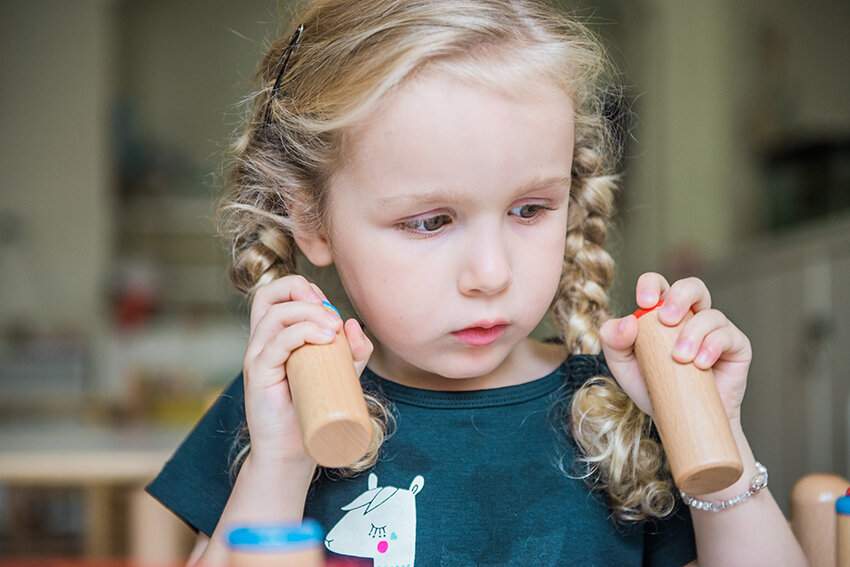
Development and Education of the Senses: Ages Birth to Three
Infants and toddlers make contact with and explore their environment through their senses. They then strive to organise in an ordered way the myriad impressions they gain through this exploration.
Through sensory exploration infants and toddlers develop the ability to discriminate variation in colour, form and shape, dimension, texture, temperature, volume, pitch, weight and taste. This ability is further refined in the Children’s House and becomes the basis for the future ability to work with abstract concepts.
Jump to section:
0.SS.010 Sensorial exploration
0.SS.020 Visual discrimination
0.SS.030 Tactile discrimination
0.SS.040 Auditory discrimination
0.SS.050 Olfactory and gustatory
0.SS.060 Sterognostic sense
Sensorial Exploration 0.SS.010
Knowledge, Skills and Understanding
Typically, children will:
01. Discriminate objects using the senses
+ Materials and Activity
Activities include:
practical life
food preparation.
Resources include:
- psycho-sensory-motor materials.
Typically, children will:
02. Gain impressions of colour, shape/form, weight, length, dimension, texture, taste, sound
+ Materials and Activity
Resources include:
- psycho-sensory-motor materials.
Typically, children will:
03. Begin to classify objects
+ Materials and Activity
Activities in which children are given the names for general categories of items in their environment
Resources include:
nomenclature objects
nomenclature cards and objects
nomenclature cards
Visual discrimination 0.SS.020
Knowledge, Skills and Understanding
Typically, children will:
01. Discriminate objects by sight
+ Materials and Activity
Activities include:
observing and batting mobiles
observing and grasping varied objects
matching.
Tactile discrimination 0.SS.030
Knowledge, Skills and Understanding
Typically, children will:
01. Refine the sense of touch
02. Discriminate objects by the sense of touch
+ Materials and Activity
Activities include:
sorting
fishing bags
food preparation.
Resources include:
objects for tactile stimulation
objects for tactile discrimination.
Auditory discrimination 0.SS.040
Knowledge, Skills and Understanding
Typically, children will:
01. Experience timbre, rhythm and beat
+ Materials and Activity
Activities involving music and movement, including:
singing
using percussion instruments.
Knowledge, Skills and Understanding
Typically, children will:
02. Listen to the sounds of objects
03. Identify objects by sound
+ Materials and Activity
Resources are objects for auditory discrimination, including:
rattles
balls with a rattle inside
shakers.
Olfactory and gustatory 0.SS.050
Knowledge, Skills and Understanding
Typically, children will:
01. Experience and identify different foods by smell, taste and sight
+ Materials and Activity
Activities include:
food preparation
work with nomenclature objects.
Stereognostic sense* 0.SS.060
Knowledge, Skills and Understanding
Typically, children will:
01. Gain knowledge of an object by feeling around it
*The word ‘stereognostic’ comes from ‘stereo’ meaning ‘around’ and ‘gnostic’ meaning ‘to know’. The term refers to the sensory perception that combines visual and muscular exploration and memory. When used in Montessori contexts, it refers to the means through which young children gain knowledge by feeling around an object.
+ Materials and Activity
Activities include:
general fishing bag
classified fishing bag
paired objects fishing bag
